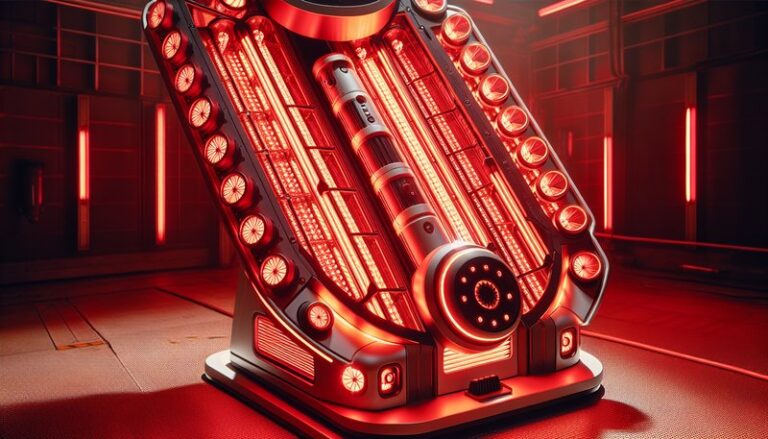Does Red Light Therapy Kill Candida?
Can light actually help combat infections in our body?
In recent years, red light therapy has gained popularity as a holistic approach to health and wellness. This article will explore whether red light therapy can effectively kill Candida, a type of fungus that can lead to various health issues when it overgrows in the body. We’ll discuss the science behind red light therapy, its benefits, alternatives, and important considerations for anyone curious about using it as a treatment for Candidiasis.
Key Takeaways
- Red light therapy is believed to have antimicrobial properties that may help reduce Candida growth.
- While promising, more research is needed to establish definitive results regarding its efficacy against Candida.
- Alternatives to red light therapy exist, including antifungal medications and lifestyle changes.
What is Red Light Therapy?
Red light therapy, also known as low-level laser therapy (LLLT) or photobiomodulation, involves the use of specific wavelengths of light to penetrate the skin. This technology is utilized to promote healing, reduce inflammation, and improve cellular energy production. The therapy typically uses red or near-infrared light, which is thought to stimulate cellular processes and enhance tissue repair.
Candida, a type of yeast present in the body, can lead to infections such as oral thrush, vaginal yeast infections, and systemic candidiasis. When the balance of microorganisms in the body is disrupted, Candida can proliferate, resulting in various symptoms and health issues.
What are the Benefits of Red Light Therapy?
Exploring the benefits of red light therapy provides insight into why it is being considered as a potential treatment for Candida overgrowth.
Enhanced Immune Function
Research has suggested that red light therapy may boost the immune system. Improved immune response can help the body naturally combat infections, including those caused by Candida.
Reduced Inflammation
Chronic inflammation can exacerbate the symptoms of Candida infections. Red light therapy has been shown to reduce inflammation, potentially alleviating discomfort and promoting healing.
Faster Wound Healing
Red light therapy is known for its ability to accelerate wound healing. If Candida infections lead to skin irritations or other lesions, red light therapy may aid in recovery.
Additionally, Improved Energy Production
The therapy can enhance mitochondrial function, leading to increased energy production in cells, which may support overall health and resilience against infections.
Is it Possible to Kill Candida with Red Light Therapy?
While red light therapy shows several benefits, its ability to directly kill Candida specifically remains a topic of exploration. Preliminary studies suggest that certain wavelengths of light may inhibit fungal growth, but comprehensive clinical research is still needed.
What are the Advantages of Using Red Light Therapy?
Utilizing red light therapy as a potential treatment for Candida offers several advantages.
Non-invasive Treatment
Red light therapy is a non-invasive procedure, making it an appealing alternative to more aggressive antifungal treatments.
Fewer Side Effects
Compared to pharmaceuticals, red light therapy generally has fewer and less severe side effects, making it a safer option for many individuals.
Convenience
With portable red light devices available, users can conveniently incorporate therapy into their daily routine at home.
What are the Disadvantages of Using Red Light Therapy?
While red light therapy has its advantages, it is also essential to consider some challenges associated with its use.
Limited Research
The evidence supporting red light therapy’s effectiveness against Candida is still limited. More extensive scientific investigations are required to confirm its efficacy.
Not a Standalone Treatment
Relying solely on red light therapy might not address the root cause of Candida overgrowth. It is often recommended to combine treatments.
Potentially Time-consuming
Regular treatment sessions may be required over several weeks or months, which could be time-consuming for those seeking quick relief.
What are the Things to Consider Before Trying Red Light Therapy?
Before incorporating red light therapy into your treatment strategy, it’s essential to consider several factors.
Consult a Healthcare Provider
Always consult with a healthcare professional to evaluate your specific conditions and determine if red light therapy is suitable for you.
Understand the Device
Different devices emit varying wavelengths of light. Understanding the device you are using is important to ensure proper treatment for Candida.
Treatment Frequency and Duration
Understanding how frequently and for how long you should use red light therapy is crucial for optimal results.
What are the Alternatives to Red Light Therapy for Candida?
Exploring alternative options can provide additional avenues for addressing Candida overgrowth effectively.
Antifungal Medications
Prescription antifungal medications such as fluconazole or topical treatments can directly target and kill Candida.
Dietary Changes
Adopting a low-sugar diet may help limit the growth of Candida by reducing its food source, as sugar promotes yeast proliferation.
Probiotics
Supplementing with probiotics can help restore the natural balance of microbiota in the body, potentially combating Candida overgrowth.
Conclusion: Is it Recommended to Use Red Light Therapy for Candida?
While red light therapy presents several promising benefits, it is not currently endorsed as a definitive treatment for Candida. Individuals interested in this therapy should consult healthcare professionals and consider combining it with traditional treatment methods for a holistic approach.
See the full review Is Red Light Therapy FDA approved?
Read our complete guide How Much Red Light Therapy Is Too Much?
Frequently Asked Questions
Can red light therapy completely eliminate Candida?
While it shows potential in reducing Candida growth, it is not a guaranteed cure and should not replace standard treatments.
How long does it take to see results from red light therapy?
The response time varies by individual but regular sessions over weeks may yield more noticeable results.
Are there any risks associated with red light therapy?
Red light therapy is generally considered safe; however, sensitivity or mild skin irritation can occur in some individuals.
Can I use red light therapy with other medications?
Consult your healthcare provider to ensure there are no interactions or contraindications with other treatments you might be undergoing.






